Reactive H Series Dyes (Monochlorotriazine)
| 0.5% DYEING4.0% | REACTIVEH Brand Dyes(Monochloro-triazine) | C.I.No. | GeneralProperties | FastnessProperties | Suitability | ||||||||||
| Affi-nity | Solubility at 300C | Dischargeability | DayLight 1/1 & 1/6 | WashingISO4 | Perspiration | Hypo-chloriteBleach | Exha-ust 40oC& 60oC | OneBath Pad Batch | OneBath Pad-Dry Stream | Printing | |||||
| Alka-line | Acidic | Steam | Sili-cate | ||||||||||||
 |
Yellow H4G | Y.18 | L | 120 | G | 5-66-7 | 5 | 4-5 | 5 | 1 | (+) | + | + | + | + |
 |
G.YellowHR | O.12 | H | 100 | F | 56 | 5 | 5 | 5 | 3 | + | + | + | + | + |
 |
OrangeH2R | O.13 | H | 180 | F | 3-44-5 | 5 | 5 | 4 | 4 | + | + | + | + | + |
 |
RedH8B | R.31 | H | 100 | P | 34 | 5 | 4 | 4 | 3-4 | + | + | + | + | + |
 |
MagentaHB | V.13 | M | 100 | P | 34 | 4 | 4 | 4 | 1 | + | + | + | + | + |
 |
PurpleH3R | V.1 | M | 100 | P | 5-66-7 | 5 | 3 | 3 | 4 | + | + | + | + | + |
 |
BlueH5R | B.13 | L | 100 | P | 56 | 5 | 4-5 | 5 | 1-2 | + | + | + | + | + |
 |
T.Blue H5G | B.25 | H | 80 | P | 45 | 4 | 4 | 4 | 3 | + | + | + | + | + |
 |
RedBrown H4R | Br.9 | L | 80 | F | 45 | 4 | 4 | 4 | 4 | + | + | + | + | + |
 |
BlackHN | Bl.8 | L | 60 | P | 4-55 | 4-5 | 4-5 | 4-5 | 3-4 | – | + | + | + | + |
REACTIVE H SERIES DYES are monochlorotriazine reactive dyes having a low reactivity and low substantivity. Since these dyes have low reactivity, they require more severe conditions for fixation with cellulosic materials. They are readily soluble by pouring water of 80-85oC on powder & stirring well. They are applicable on cellulosic materials by both dyeing as well as printing methods.
In comparison with cold brand dyes, the `H’ series dyes require either a long steaming time or a high thermofixation temperature (with urea) for optimum fixation. H dyes of low to medium substantivity may lead to migration problem in dyeing prior to fixation.
When low concentration of highly substantive dyes are used, tailing becomes evident. Tailing is avoided by selecting dyes of low or medium substantivity, using small padding troughs fed to constant level and operating at the highest running speed commensurate with the needs of the rest of the process
| Affinity or Substantivity on cotton | |||
|---|---|---|---|
| L | = Low | + | = Suitable |
| M | = Medium | (+) | = FairlySuitable |
| H | = High | – | = NotSuitable |
| V | = VeryHigh | ||
| Dischargeability | |||
| G | = Good | Light | 1to 8 in increasing order |
| F | = Fair | Washing& other | 1to 5 in increasing order |
| P | = Poor | O | = Orange |
| Y | = Yellow | V | = Violet |
| R | = Red | Br | = Brown |
| B | = Blue | G | = Green |
| Bl | = Black | ||
Though `H’ dyes are of major interest for printing applications, a variety of dyeing methods are used for `H’ dyes.
| i) | Exhaust dyeing method (Jigger Machines)
Set the dye-bath with required amount of water at 40oC and add half the amount of dyestuff solution with 1-2 g/l resist salt, run for 1 turn and add the remaining half amount of dyestuff solution and run for another turn. Then add half of the salt and start raising the temperature slowly. (such that 65 to 85oC temperature could be attained after two turns). Run for I turn and then add the remaining amount of the salt and give it another turn. Now add half the amount of predissolved alkali and give one turn. Temperature is maintained at 80oC. Add remaining half amount of alkali and give another three turn for better fixation give two more turns and then drain the jigger.
|
|||||||||||||||||||||||||||||||||||||||||||||||||||||||||||||||||||||||||||||||||||||||||||||||||||||||||||||||||||||||||||||||||||
| ii) | Exhaust dyeing method (WinchMachines) Viscose Rayon The dye bath is set at 50oCwith 20 parts/1000 partsresist salt and dissolveddye solution is added andfabric is dyes for 10 minutes.
The required amount of saltis added and goods are dyedfor about 15 minutes. Thensoda ash is added and dyeingis continued for further10 minutes. The goods arethen washed. Salt and alkali requirements- Parts/1000 parts
|
|||||||||||||||||||||||||||||||||||||||||||||||||||||||||||||||||||||||||||||||||||||||||||||||||||||||||||||||||||||||||||||||||||
| iii) | Pad-dyeingmethod`H’ dyes are applicable bythis method by using paddingmangle and suitable dryingand steaming equipments asper requirement.
(a) Pad – Dry – Bake – Wash
The fabric is padded coldin above padding liquor anddried in hot flue, hot airstenter or in drying cylinders.The dried fabric is then bakedfor 30 seconds to 5 minutesat 200-160oC forfixation. The drying beforethermofixation should be slowand even to avoid migrationand an unlevel condition.(b) Pad – Dry – Steam -Wash
The fabric is padded coldin above padding liquor anddried in hot flue. The fabricis then steamed for 3-10 minutesat 100-150oC andwashed-off.(c) Pad – Dry – Chemicalpad – Dry – Steam – Wash The dye is dissolved witha minimum amount of urea and10 parts of resist salt per1000 parts and liquor. Thefabric is then padded cold,dried and passed through causticsoda in brine solution andthen steamed for 60-75 secondsat 100-105oC andwashed off. Parts/1000 parts
(d) Pad – Batch – Wash- Dry
The fabric is padded in theabove padding liquor and coveredwith a plastic sheet. Keepit for maximum 24 hours and wash. Washing off procedure In order to obtain maximum wet-fastness properties, brightness and purity of shades with consistent dyeing results. It is essential to give a through ‘Soaping’ to clear off unreached hydrolyzed dye from the dyed fabric. The dyed fabric is rinsed repeatedly in cold water to remove of the alkali, salt and unfixed dye present and rinsed again in warm water not higher than 60oC then run in a bath containing: Anionic detergent – 1/2 gms/liter for 15 minutes at the boil. Then rinse in warm water (up to 60 oC) and finally in cold water. The most satisfactory results in Washing off, particularly for piece goods are obtained by employing an open soaper or perforated Beam-washing machine. If such equipments are not available, conventional ones like jig or winch may be used. For yarn in the hank form open-vat is employed and for yarn in packaged form the package-dyeing machine itself used. (B) Printing Methods Due to low reactivity of thesedyes the print paste stabilitycontaining alkali is verygood. Secondly due to lowsubstantivity the hydrolyzeddyes have the least tendencyto stain adjacent white materialsand thus these dyes are morepopular for use by printingapplications, the differentprinting methods are as under: (i) Print – Dry – Steam- Wash – Dry (‘H’ dye with alkali) Printingrecipe
Process Mix dye powder with ureaand pour hot water of temperatureabout 80-85oCand stir well to dissolvecompletely. Add this dyesolution to sodium alginatethickening paste containingresist salt stir well tomix. Just before printingadd sodium bicarbonate. Print the cloth with aboveprint paste and dry. Avoidover-drying and protectprinted goods from acidor reducing fumes. Thensteam dried goods for 5-8minutes on rapid ager or15-20 minutes on star ager. (ii) Print – Dry – Bake- Wash – Dry (‘H’ dye with alkali)
Process Prepare the print paste, printand dye the goods. The driedgoods are then baked as under:
* use Sodium Bicarbonate forBlue H5G and Red Brown H4R.Use 30 parts soda ash withblack HN. (iii) Print – Dry – Pad- Batch – Sodium Silicate- Wash – Dry (`H’ dye without alkali)
The cloth is printed withthe above paste and dried.The dried goods are thenpadded in a sodium silicatesolution of 100o Tw and padding goods arebatched on plastic sheetand kept for about 15 hoursand then washed. (Silicate: 1:2:1 Na2O: SiO2 ratio). |
Theinformation and procedure providedhere is in good faith and to thebest of our knowledge, but withoutliabilities.

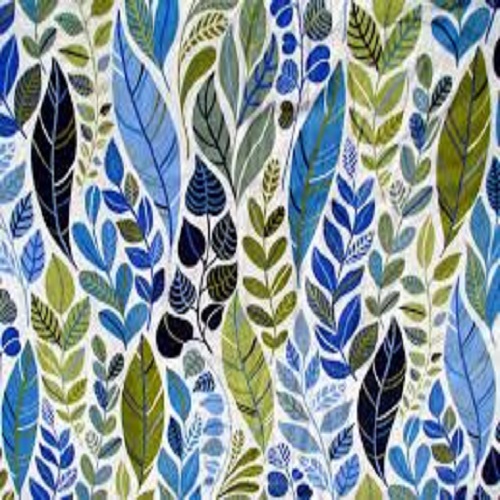
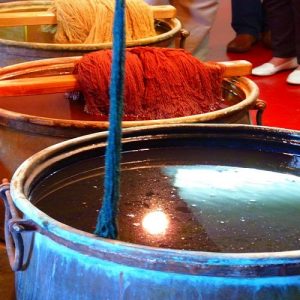
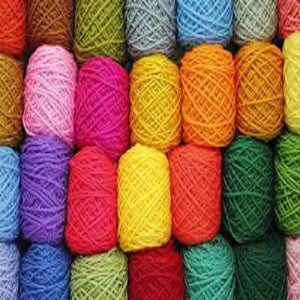
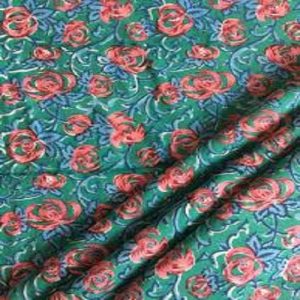
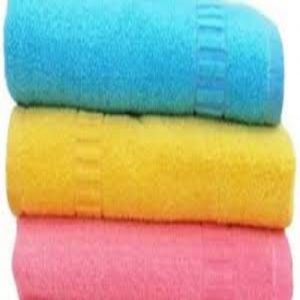
There are no reviews yet.